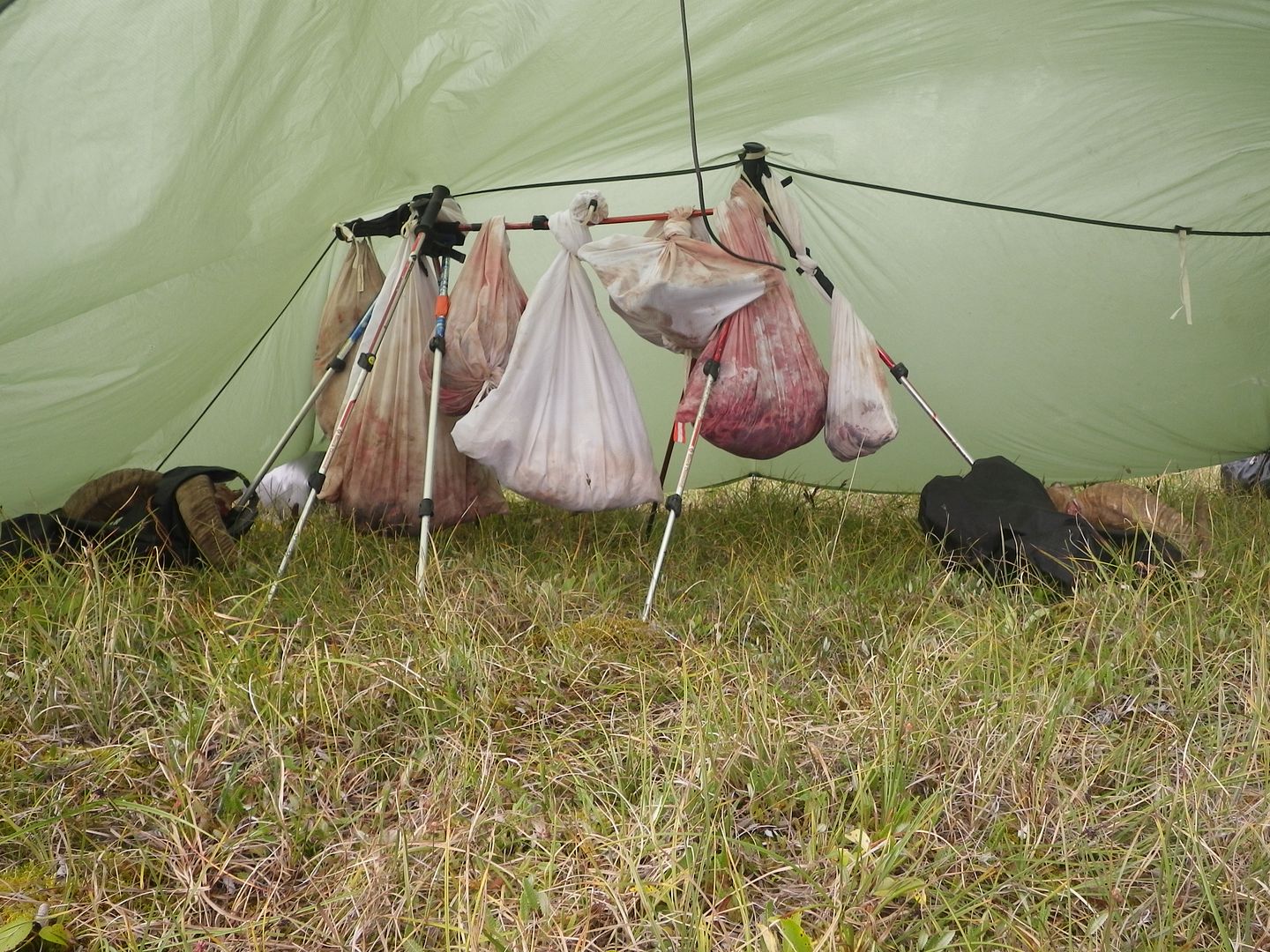- Joined
- Feb 13, 2013
- Messages
- 1,622
Hey guys, a couple of points to clarify two responses above:
Old Material vs new material: One year a couple years back we tried a new material that was similar to Caribou Gear's texture. We found that material to be heavier and bulkier, and it performed almost identically to our original synthetic material. But, it cost more to make and the benefits for our hunters suggested the lighter weight fabric was the way to go for overall cost, weight savings, and field performance. So, Todd, you must have the "newer material" that has a checked pattern as a texture. That fabric is still great, however, we switched back to our original TAG Bag material and will stay with it. Weight savings example: the heavier material forced our 28"X60" set to be 1.5lbs heavier than the same set made with our current original material, so 3.6 lbs vs 2.1-lbs. Big difference!
BOMB Pack vs 24"X44" set of TAG Bags: The BOMB Pack is strictly for de-boned meat of elk, deer, and sheep. It weighs a mere 10-oz for the whole set, and Aron designed the size to fit an entire de-boned elk. I've found that I can get two de-boned sheep into one set of the BOMB Pack. But, if you plan to qtr your elk, I'd strongly recommend going with the 24"X44" set of five bags. That's the ideal size for any big elk, large Muley, or sheep if quarters are left whole.
Hope this helps, guys.
Last note: I'm not one of those sponsor's who gets wired over positive reviews or comments about competitor brands. Although Caribou Gear unethically "borrowed" my hard-earned reasoning and theories for innovating a new synthetic fabric movement away from cotton game bags, they still make a good product. While it appears they simply cut and pasted my original concepts to their website, they found a material that feels like cotton and added some bells and whistles to their brand to make it different than our TAG Bags. Heck, they even tried to mimic the orange on black stuff sacks we've always used, not very original at all. In the larger picture, they have done a great job marketing their brand and seam to be doing well. In the end, I feel as though either brand will serve hunters well in the field, providing an advanced option for reducing the spoilage threats we fight hard against in inclement environments. The real reason hunters will find our TAG Bags to be superior is price point and continued focus on understanding the technology and science behind field spoilage threats. In that realm, I continue to lead our brand toward the future through hunter education and forward thinking product design.
Larry
Old Material vs new material: One year a couple years back we tried a new material that was similar to Caribou Gear's texture. We found that material to be heavier and bulkier, and it performed almost identically to our original synthetic material. But, it cost more to make and the benefits for our hunters suggested the lighter weight fabric was the way to go for overall cost, weight savings, and field performance. So, Todd, you must have the "newer material" that has a checked pattern as a texture. That fabric is still great, however, we switched back to our original TAG Bag material and will stay with it. Weight savings example: the heavier material forced our 28"X60" set to be 1.5lbs heavier than the same set made with our current original material, so 3.6 lbs vs 2.1-lbs. Big difference!
BOMB Pack vs 24"X44" set of TAG Bags: The BOMB Pack is strictly for de-boned meat of elk, deer, and sheep. It weighs a mere 10-oz for the whole set, and Aron designed the size to fit an entire de-boned elk. I've found that I can get two de-boned sheep into one set of the BOMB Pack. But, if you plan to qtr your elk, I'd strongly recommend going with the 24"X44" set of five bags. That's the ideal size for any big elk, large Muley, or sheep if quarters are left whole.
Hope this helps, guys.
Last note: I'm not one of those sponsor's who gets wired over positive reviews or comments about competitor brands. Although Caribou Gear unethically "borrowed" my hard-earned reasoning and theories for innovating a new synthetic fabric movement away from cotton game bags, they still make a good product. While it appears they simply cut and pasted my original concepts to their website, they found a material that feels like cotton and added some bells and whistles to their brand to make it different than our TAG Bags. Heck, they even tried to mimic the orange on black stuff sacks we've always used, not very original at all. In the larger picture, they have done a great job marketing their brand and seam to be doing well. In the end, I feel as though either brand will serve hunters well in the field, providing an advanced option for reducing the spoilage threats we fight hard against in inclement environments. The real reason hunters will find our TAG Bags to be superior is price point and continued focus on understanding the technology and science behind field spoilage threats. In that realm, I continue to lead our brand toward the future through hunter education and forward thinking product design.
Larry

